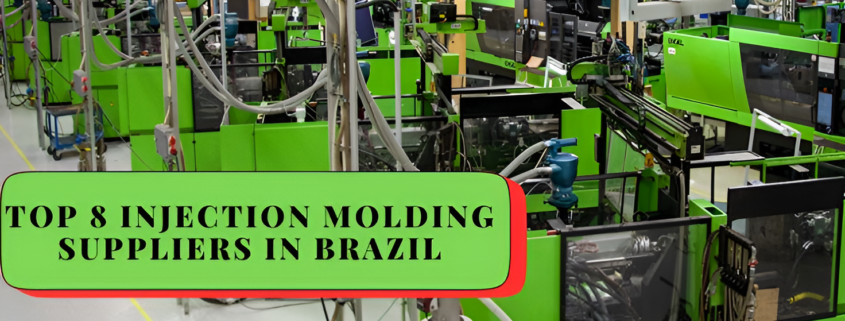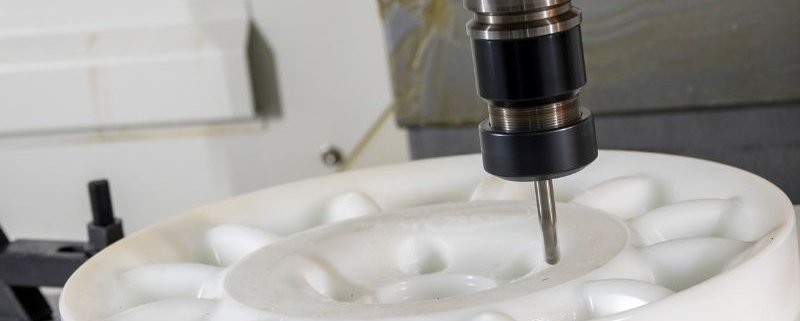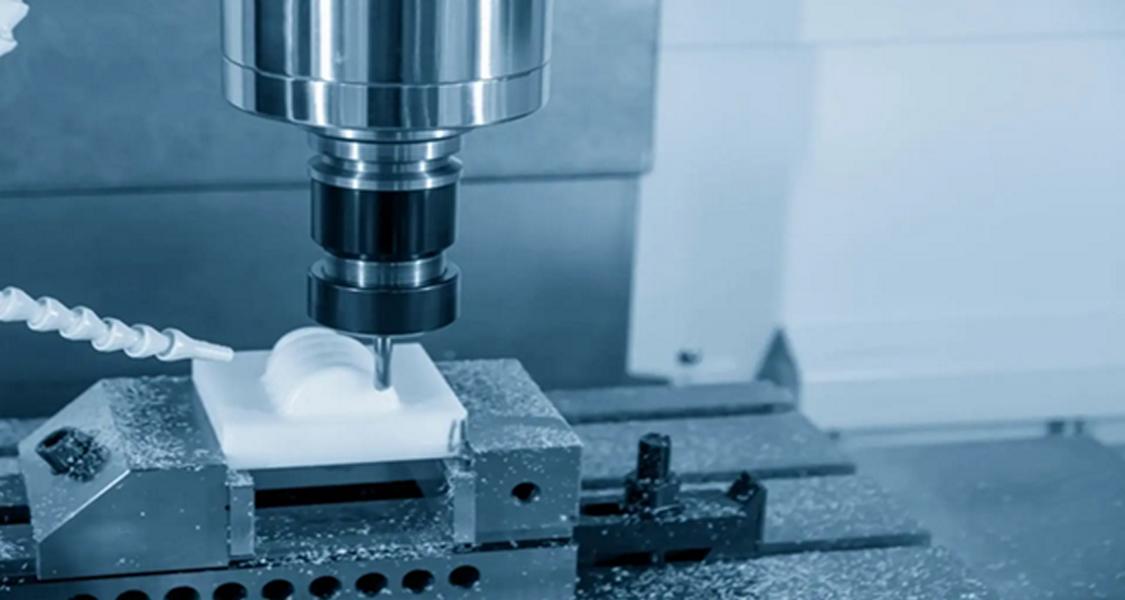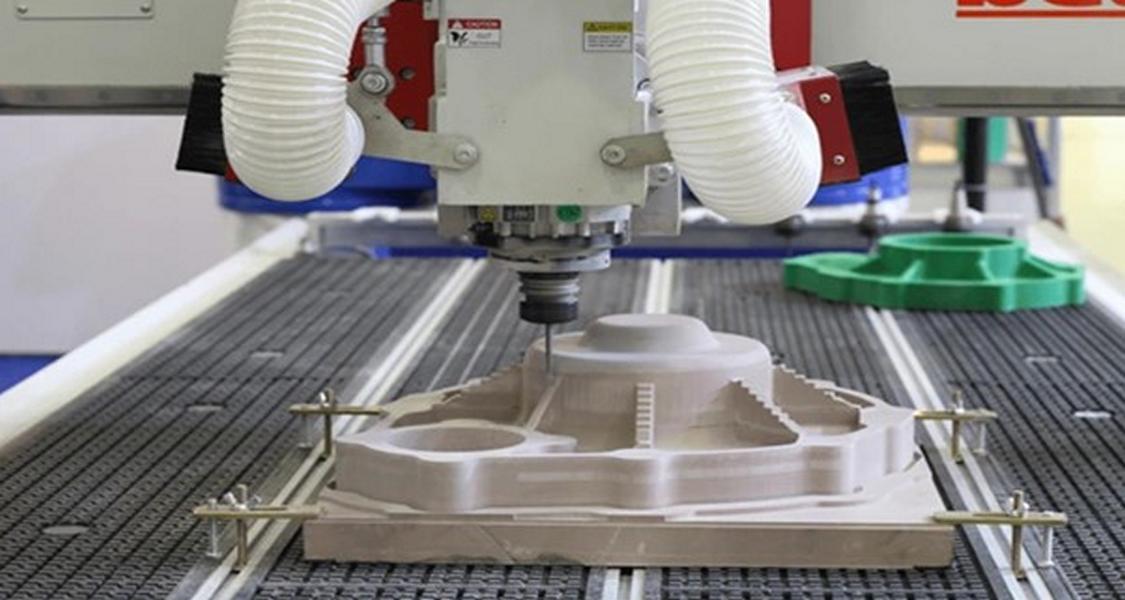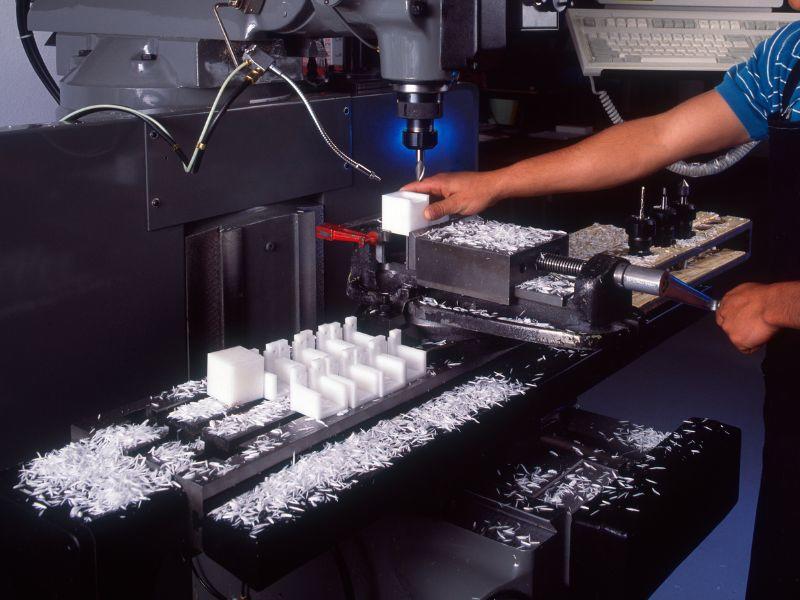Advancements in manufacturing technology have been responsible for these CNC Machined Bicycle Parts that have revolutionized the bicycle industry. It is a big part of creating high-quality, precise and durable components. The advantage of this automated production process is accuracy, consistency and efficiency in production. CNC machining is used to make lightweight but solid components for the bicycle that ultimately enhance the overall performance of the bike and the rider experience. Cranksets frames and forks have come to use CNC machining to build them, which completely changed the way bicycle parts are made. CNC Machined parts for bicycles represent excellent durability with an attractive lightweight design thanks to the fact that such parts are made from high-strength materials like aluminum alloys, titanium, carbon composites etc. CNC machining saves the trouble of weak points, and the proper fit, and is great for professional and amateur cyclists.
CNC machining is one of the most salient advantages of the process to mass produce parts while maintaining its quality constant. Its efficiency is especially useful to the bicycle industry, whose component dimensions vary even a little affecting performance a lot. Also, CNC machining enables customization which in turn allows the cyclists to tailor their bikes to fit the riding style, terrain and aesthetic tastes. As a global leader in CNC bicycle component assembly manufacturing, China has provided the ability to bring components at a low cost and with good quality. With its advanced and strict quality control measures, which have elevated the country as a choice for manufacturers, the country has been able to achieve this.
In this article, we explore how CNC machinery has affected the bicycle industry, then present the most durable CNC machined bicycle parts, the tools that they use and what CNC milling is. CNC machining is set to remain an organic part of the industry evolution as we shall see more bicycles that are lighter, stronger and more efficient than ever before.
Understanding CNC Machined Bicycle Parts

The CNC (Computer Numerical Control) is a sophisticated procedure of manufacturing through which the metal and composite materials are cut, shaped, and refined with the use of automated tools. This technique is useful for manufacturers to make complex bicycle components at high accuracy and consistency.
Some of the CNC-machined bicycle parts most commonly produced are:
- Cranksets – Essential for efficient pedalling and power transfer.
- Keeping things smooth when shifting gears may require derailleur hangers.
- Handlebar stems – Help for stability and guidance.
- Brakes Calipers – Ensures that the stopping power is trustworthy.
- The rider’s control is hence improved and grip enhanced by the Pedals.
The CNC machining creates these components with very similar feature sets of durability, lightweight design and excellent performance.
These are the Most Durable CNC Machined Bicycle Components.
Bicycle components are highly durable and precision engineered and their manufacture through CNC machining is important. Strong materials and precise machining procedures guarantee that participants can use bicycle parts all day long without providing their performance and durability. The most durable CNC-machined bicycle components can be seen below.
Frames

The frame is one of the most highly durable CNC-machined bicycle components. In terms of strength and lightweight properties, high-strength alloys such as titanium (Ti-6Al-4V) and aluminium (6061-T6) are commonly used.
- A titanium frame offers tensile strength of up to 900 MPa, which is a significant amount of resistance to fatigue and stress.
- The frames are made of aluminium to offer a perfect balance between toughness and lightness, thereby improving handling without increasing unnecessary weight.
- The use of CNC machining provides a precise tolerance that decreases the weak zones and increases the structural integrity.
CNC machined frames help maintain uniform wall thickness and that plus a smooth, comfortable ride is helped by frames that can withstand high impact force.
Forks

As the only links of the bike that contact the ground, where friction exists between the tyre and the ground, CNC machined forks are key for bike stability and safety and are built to handle extreme loads.
- Forks: 4130 chromoly steel offers a very strong material and is geared towards high-performance cycling.
- A titanium fork is lightweight and very resistant to fatigue, thereby lasting for a long time.
- In CNC machining motion, stress points are eliminated enabling precise alignment and improved ride stability.
The stress and impacts that cycling forks undergo are continuous, therefore CNC machining will ensure tight tolerances for the fork and enhance the strength and durability of the entire fork.
Handlebars

Rider control is critical in handlebars, and CNC machining brings forth perfect, strong and ergonomic handlebars depending on the application.
- Widely used aluminium alloys like 7075-T6 are high-strength and lightweight.
- The carbon composite handlebars provide a high strength-to-weight ratio and therefore they are perfect for performance-oriented riders.
- With CNC machining, you are guaranteed high precision and it eliminates weak points achieved from casting and generally helps make a bar that is more shock absorbing.
CNC machined handlebars feature the elimination of stress concentration zones that weaken original handlebars, making them structurally stable during impact, and reducing the risk of getting hurt or uncomfortable for the rider.
Cranksets

Cranksets are high-stress components subject to constant forces from pedalling. They help strengthen and harden a CNC machining capability.
- High strength and low weight 7075 aluminium cranksets will efficiently transfer your power.
- Titanium cranksets are exceptional for the long term, as they are known for having great fatigue resistance.
- A CNC machined model has greater dimensional accuracy and a good surface finish, which reduces the friction and hence enhances the performance.
As CNC machining is a reliable process, it minimizes failure points cranksets are lightweight yet very durable, allowing them to efficiently cycle.
Hubs

As hub plays an essential role in support of wheel movement and it has to tolerate the constant rotational forces and weight load.
- 6061T6 aluminium hubs are used widely because of their high strength and their lightweight composition.
- Bearings are perfectly aligned by CNC machining resulting in optimum efficiency of rotation.
- With stress evenly distributed, it helps hub durability overall.
Hubs are machined to exact specifications with CNC machining so that they do not skip a beat over time.
Brake Calipers

In charge of pressing the brake pads to provide sufficient stopping power are the brake calipers. Their calipers are CNC machined calipers designed to be lightweight, strong, and heat resistant enough to perform as expected and exemplify consistent braking performance. These materials are excellent at heat dissipation and have high corrosion resistance, hence are commonly used, such as aircraft grade aluminum.
In summary
As it turns out, CNC machining has become the fastest-growing method of producing durable, high-performance bicycle parts. CNC machining rewarded me with the perfect combination of ‘precision, strength, and longevity’ from frames and forks, all the way down to cranksets and hubs.
- The lightweight strength is provided by the titanium and aluminium frames.
- Its Chromoly steel and titanium forks are fatigue-resistant.
- They offer control and shock absorption as they are made from aluminium and carbon fibre handlebars.
- There are CNC-machined cranksets and hubs for higher efficiency and reliability.
CNC machined bike parts give the riders advantages such as long lasting quality and high performance as well as durability.
CNC Machined Bicycle Part Key Materials

Aluminum Alloys
Among the aluminium alloys used for CNC machining bicycle parts, 6061-T6 is the common one. Such alloys allow for lightweight components but with good strength, making them perfect for performance bicycles.
Aluminum alloys also have high tensile elastic of up to 310MPa. Tight tolerances and lower surface roughness is achieved on the components resulting from CNC machining. Because they are tough and resistant to corrosion, aluminum alloys are commonly used for crank arms, handlebars, and stems.
Aluminum is also highly machinable and therefore the production can be done faster. Therefore, CNC-machined bicycle parts offer the best performance at the lowest weight possible.
Titanium Grades
Titanium alloys like Ti-6Al-4V are used for manufacturing many high-end bicycle components. This alloy is exceptional for its high strength and fatigue resistance (with tensile strength of 900 MPa).
Titanium has low density and therefore makes for long term durable and rides comfortable stems, seat posts and even bolts. Because of the precision of bicycle milling CNC machining parts, they feature tight tolerances, which are ideal for high performance parts.
Another main plus point about titanium is that it does not corrode easily and can endure adverse weather conditions. Furthermore, titanium is biocompatible, thus a great option for those with sensitive skin or allergic cases.
Steel Types
CNC machined bicycle parts are widely used in steel, especially, high strength alloys such as 4130 chromoly. Steel has excellent shock absorption and the ribs are made with a tensile strength of around 850 MPa to make the material very durable.
Frames, forks, and minor accessories are made of steel CNC machined parts, being structurally strong and performance-durable. With the help of CNC machining these components can be made to have precise dimensions so that they will fit perfectly in the bicycles.
Steel is economical, so it is employed in most budget and premium bicycles. The high modulus of elasticity property allows vibrations to be absorbed and thus increasing rider comfort on rough terrains.
Carbon Composites
CNC machining the components for sophisticated bike parts, in a variety of applications, a popular choice of carbon fibre reinforced composites is very often used, due to their high strength-to-weight ratio. They are commonly employed on frames, forks and wheelsets where lightweight but highly rigid structures are desired.
With tensile strength depending on the type, up to 3000 MPa. Carbon composites can be provided with CNC machining precision and durability, delivering a competitive cycling product.
The damping properties of carbon fiber are one of its greatest advantages – they improve the ride comfort, absorbing vibrations. Meanwhile, carbon composites are also extremely rugged to environmental factors so as to support long term operation at various conditions.
Plastics
There is a role for plastics in CNC machining in the bicycle industry. Nylon, polycarbonate and PVC are the most commonly used materials because of their lightness and resistance to impact as well as durability.
- Nylon is famous for being very strong, flexible and well-suited for parts subject to repeated stress.
- The impact resistance of polycarbonate is very high, therefore, it can be utilized in parts that are exposed to high forces, high vibrations, etc.
- PVC stands out in terms of cost-effectiveness and wearing resistance, thus it is considered a practicable solution to produce non-load-bearing components.
The choice of plastic material is determined by the particular needs of the bicycle component and by the application for which it is designed. Plastic parts made by CNC machining are durable but ensure a low overall weight of the bicycle so that it’s as precise and reliable as possible.
Material Benefits
It is of vital importance that the right material be chosen for CNC-machined bicycle parts.
- Alternatively, aluminium is lightweight and corrosion-resistant.
- Titanium is unmatched by strength and durability, hence the ideal for high-performance bicycles.
- It is cheap and strong, with excellent shock absorption.
- Best used to enhance speed and comfort, carbon fibre composites provide the best strength ratio.
- All these materials apply to CNC machining with the certainty of high precision, repeatability and durability.
- The choice of material further increases the performance, the longevity and the efficiency of bicycle components.
The Process of CNC Machining Bicycle Parts

The bicycle industry is one of the typical applications for CNC machining because CNC machining is capable of making accurate, complex, and durable parts. The process is efficient, accurate and consistent making it the perfect process for the manufacturing of high-performance bike parts. Illustrated below is a step-by-step usage of CNC machining to make bicycle parts.
1. Design
The first step of CNC machining is a digital design created through computer-aided design (CAD) software. This is a digital blueprint including such properties as the dimensions, geometry and other details of a bicycle part made on a three-axis computer numerically controlled (CNC) milling machine. Designing well ensures that the final product solution result shall meet engineering and performance requirements.
2. Programming
Once the design has been completed, a computer program is made with computer-aided manufacturing (CAM) software. Afterwards, this program transforms the design into machine readable command, i.e. tool path, depth of cutting and sequencing of cutting. After programming, the instructions will get loaded into the CNC machine and will then let it automate the machining process.
3. Material Selection and Preparation
Next, one should select the appropriate material for a given bicycle part that has certain properties like strength, weight and resistance to corrosion. The common materials are aluminium alloys, titanium, carbide composite fibre and high-strength steel. The material that is selected is cut and prepared for it to fit in the CNC machine’s space.
4. Machining
With the addition of cutting tools such as drills, mills, and lathes, the CNC machine is ready to be used in turning, drilling, boring and cutting. The computer-controlled cutting tool starts to take a raw form in the material after the excess material has been taken off to make a desired component. The CNC machining offers high precision, smooth finish and accurate tolerance, so each part is consistent and reliable.
5. Finishing
After machining, finishing the bicycle part may be needed to improve its aesthetic value, durability and performance. This may include:
- Smooth and refined polish is applied to enhance appearance.
- Sanding off the rough edges and other imperfections.
- And other anodizing or coating for corrosion and longevity purposes.
6. Inspection and Quality Control
The last step is a rigorous inspection driving failure of the part to meet tolerance, strength and dimensional accuracy requirements. It is being verified by sophisticated tools as a coordinate measuring machine (CMM) or laser scanner for precision and consistency. Any deviations are adjusted on the CNC program for future production improvements.
The Role of Bicycle Milling CNC Machining Parts in Manufacturing

Bicycle milling CNC machining parts are made through a specialized milling process of getting rid of materials from one solid block producing exact shapes and complicated designs. CNC milling has an advantage over conventional manufacturing processes due to its high control over the final product which leads to a high level of detailing and customization in the bike parts.
Advantages of CNC Milling in Bicycle Parts Production
Precision and Accuracy
CNC milling machines guarantee that each part fits together perfectly since they run with extremely close tolerances. It is especially important in the bicycle business where performance depends even on minor changes.
Durability and Strength
High-quality metals such as aluminium, titanium, carbon fibre composites and more are some of the metals CNC machined parts are made of. These materials have been applied to enhance the strength and longevity of the components of the bicycle.
Customization
Riders and manufacturers can make personalized parts for particular cycling needs. The designs can be unique, aerodynamics can be improved, and weight can be reduced.
Consistency and Mass Production
One difference is that, unlike manual machining, CNC milling supplies consistency in huge manufacturing batches, which is ideal for mass production with high quality.
Difference Between Bicycle and Bikes and Their Parts
Many times the terms bicycle and bike are used interchangeably, but both do have different meaning in their respective context.
1. Bicycle
A bicycle is a vehicle with two wheels that is powered by pedalling. There is no engine and all is done with human effort. Bicycles are used for several purposes, such as commuting, exercise, and sports (such as road racing or mountain biking).
2. Bike
This word is a more general term that can encompass the word bicycle (which you pedal) and the word motorbike (engine-powered motorcycle). It is true that when people speak of ‘bike,’ they may refer to a normal bicycle or a motorbike, that is if the context supports it.
3. Parts of a Bicycle vs. a Motorcycle (Bike)
| Section | Human-powered bicycles | Motorcycle Bicycle |
| Frame | Lightweight metal carbon fibre | Heavier steel aluminium |
| Wheels | Thin or thick, depending on the type | Wider and more durable |
| Pedals | Used to move the bicycle forward | Absent in motorcycles |
| Coupon & Clutch | Interconnects the pedals to the wheels | Employ a drive chain or shaft |
| Brakes | Rim or disc brakes | Disc brakes or drum brakes |
| Steering | Straight or curved | Throttle, clutch, handle and other control |
| Seat | Narrow and light | Wider and soft |
| Engine | No engine relies on human power | Has a fuel-powered engine |
| Fuel System | Not required | Requires petrol or electric power |
| Lights | Reflectors or basic battery-operated | Headlights, indicator, and brake lights |
An easy way to summarize is that all bikes are bicycles, but not all bicycles are bikes. The biggest difference is that bikes are powered by the cyclist’s pedals, while bikes are powered by an engine.
Why CNC Machine Bike Parts Are the Future of Cycling
The increase in demand for high-performance bicycles has prompted manufacturers to use CNC machine bike parts as cycling technology progresses. Cutting edges for CNC machining in bike design mean innovations in design, weight reduction as well as material optimization that result in faster, stronger, and more efficient bicycles.
The key benefits of CNC machine bike parts are:
- Such CNC-machined parts help make bicycles more aerodynamic and efficient.
- Lightweight Design: Ensuring strength with no unnecessary weight, precision machining decreases extra weight.
- CNC parts give better Aesthetic Appeal as it has the smooth finishes and intricate detailing as compared to previously formed parts.
- Reliable – CNC machining does not contain any defects and is highly durable.
- These benefits make CNC machined components preferred by many professional cyclists and most bicycle manufacturers, and thus it’s a common standard of high-end bicycle components.
The Global Manufacturing of China Bike Parts in CNC Machining
China is a powerful force in the CNC machining of the bike suppliers. Due to the availability of advanced manufacturing facilities, skilled workforce, and technological expertise, the country is an accepted destination for the production of CNC Machining bike parts.
What are the reasons for choosing China CNC Machining Bike Parts

1. Cost-Effective Production
The competitive price plus quality option that China offers make it a good choice for both small and large scale production of CNC machined bicycle parts.
2. High Precision and Quality Control
The components produced by Chinese manufacturers are precise and durable and follow international standards, as state-of-the-art CNC machines are used by Chinese manufacturers to manufacture the products.
3. Mass Production Capabilities
China is equipped with large-scale production facilities to accommodate bulk orders and able to deliver bicycles timely as it well serves global bicycle brands.
4. Advanced Technology and Innovation
Many Chinese CNC machining companies are investing in research and development, constantly improving production techniques, and constantly bringing innovative bicycle components.
Conclusion
In the bicycle industry CNC machining is an essential technology whereby unmatched precision, strength and efficiency of critical components can be produced. CNC machined bicycle parts range from cranksets and derailleur hangers to frames and hubs and ensure the proverbial necessity of high durability, lightweight construction and the best performance. This improvement makes CNC machined components ideal for high-performance cycling, as it allows the components could be made from the advanced materials of aluminium, titanium, and carbon composites. CNC machining does come with more benefits than durability and performance. The manufacturing process we use is one of large-scale production while still maintaining high-quality standards, such that every single part is built to a precise specification. Moreover, CNC machining offers customization, hence, cyclists can customize their bikes accordingly, according to their personal needs as well as preferences.
China is currently dominant in the CNC industry as a supply chain to the global market. With the ongoing progress in cycling technology, CNC machining will have an even greater function in the growth of the industry, helping to push developments of aerodynamics, weight, and material strength. After investing in CNC machined bicycle components, manufacturers and users of bicycles will have bicycles that will perform for more duration, will be reliable and will give a high-level performance, thus making cycling efficient and enjoyable.
Frequently Asked Questions (FAQs)
1. What are the advantages of CNC machining of bicycle parts?
Bicycle components are made precisely, durably, consistently and round the clock using CNC machining. It makes for parts that are lightweight, yet strong, that improve performance, as well as allow customization.
2. What kinds of materials are used in CNC machined bicycle components?
Aluminum alloys are common materials, 6061-T6, 7075-T6, Titanium Ti-6Al-4V, Carbon fiber composites, high strength steel 4130 chromoly and plastics like nylon, polycarbonate.
3. Why has China become a main producer of CNC machined bicycle parts?
Because China provides low cost production, advanced CNC technology, the ability to mass produce, and a high level of quality control, China is the market leader of bicycle manufacturers around the world.
4. What advantages does CNC machining give to bicycle components?
Through CNC machining, bicycle parts take on precise tolerances, remove the weak zones and offer better material properties that result in long-lasting and resilient parts.
5. What are the long-lasting CNC-machined bicycle parts?
CNC-machined bicycle frames, forks, cranksets, hubs and brake calipers are among the most durable of CNC-machined bicycle parts and are intended to experience some of the worst riding conditions without sacrificing performance.


